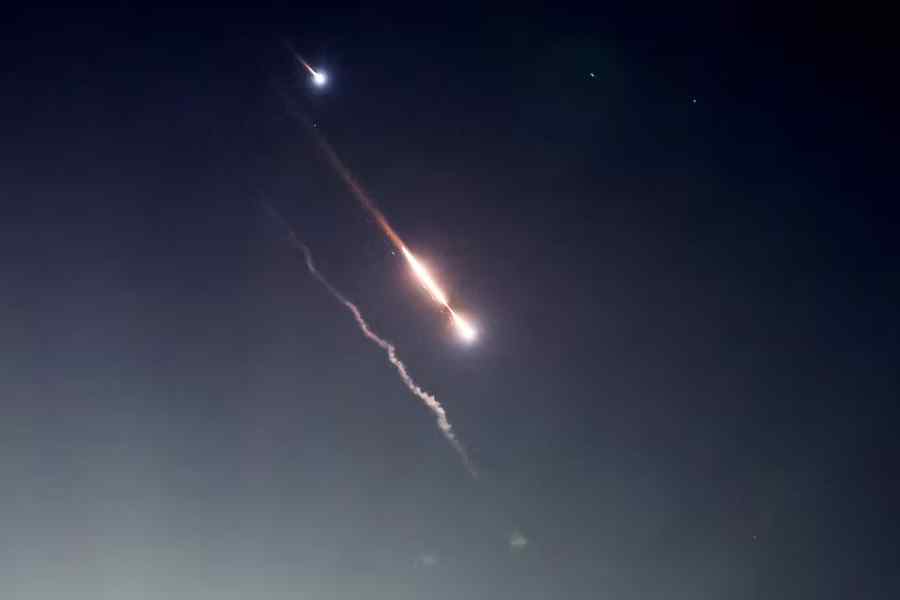Iran began firing hundreds of drones and missiles at Israel late on Saturday, including weapons that experts say are more sophisticated than anything Israel had encountered until now in six months of fighting against Hamas and its allies in the region.
Previously, Israel had faced aerial attacks from Hamas and Islamic Jihad, whose rocket arsenal includes short-range (12 to 25 miles) and somewhat inaccurate 122-milimeter rockets of the Grad family, as well as Syrian-made M-302 rockets with a range of about 100 miles. Hamas also has Fajr-5 rockets from Iran and a similar, locally made version of the Fajr-5, both with a range of about 50 miles.
The weapons Iran used on Saturday can travel much farther, and some of them can travel much faster. Still, Israel said that nearly all of the missiles and drones that Iran fired were intercepted, many with help from US forces.
In Saturday’s attack, 185 drones, 36 cruise missiles and 110 surface-to-surface missiles were fired towards Israel, according to Israeli military officials. Most of the launches were from Iran, though a small portion came from Iraq and Yemen, the officials said.
Fabian Hinz, an expert on Iran’s military at the International Institute for Strategic Studies in Berlin, said in a post on X that Iran is likely using a cruise missile developed by the Islamic Revolutionary Guards Corps, the Paveh 351. It has a range of more than 1,200 miles — plenty to reach Israel from Iran.
According to his post, different versions of that missile have also been provided to the Houthis in Yemen and to the Iraqi Popular Mobilization Forces.
And Jeffrey Lewis, a member of the International Security Advisory Board at the US state department, said in a post on X that Iran was using land-attack cruise missiles that could carry around a ton of explosives.
He also noted that much of Iran’s arsenal of ballistic missiles have a long enough range to reach Israel. And though Iran’s drones carry much smaller explosive payloads than missiles, they have the advantage of being able to hover and shift targets.
In recent decades, Iran has largely been focused on deterrence, long-range missiles, drones and air defences. It has one of the largest ballistic missile and drone arsenals across West Asia, according to weapons experts, and is also becoming a major arms exporter globally.
Hamas backs Iran
Hamas said the attack on Israel was a “worthy response” to the April 1 strike on the Iranian Embassy complex in Syria. Countries have a “natural right” to defend themselves against “Zionist assaults,” said Hamas, which is backed by Iran. Israel has not confirmed responsibility for the strike in Syria and has accused Iran of seeking its destruction.
New York Times News Service










